MLB: Declaring WAR on the BBWAA Award Finalists

How do the recently announced BBWAA MLB Award finalists compare through the lens of Wins Above Replacement?
The MLB BBWAA Award finalists came out on Monday and had many of the names you would expect. Mike Trout and Mookie Betts will finish in the top three for the American League MVP Award. Kris Bryant is among the finalists for the NL MVP. Rick Porcello, who won a career-high 22 games this year, is a top-three candidate for the AL Cy Young along with post-season star Corey Kluber and veteran Justin Verlander.
There are some interesting players NOT among the finalist also. Last year’s AL MVP, Josh Donaldson, will not finish in the top three this year despite having another very good season and playing for a team that earned a wild card spot. The three pitchers who finished atop last year’s NL Cy Young Award list—Jake Arrieta, Zach Greinke, and Clayton Kershaw—did not make the top three this year. One of the finalists for the NL Rookie of the Year Award is a 32-year-old pitcher who has been pitching professionally since 2008 (in Japan).
With the finalists being revealed, I decided to look at each award through the lens of the two main versions of Wins Above Replacement (WAR), which come from FanGraphs and Baseball-Reference.com. WAR is a framework for combining the things a player does on the field to determine how many wins that player is worth compared to a replacement-level player. Here’s a handy guide:
0-1 WAR: Scrub
1-2 WAR: Role Player
2-3 WAR: Solid Starter
3-4 WAR: Good Player
4-5 WAR: All-Star
5-6 WAR: Superstar
6+ WAR: MVP
For position players, the main difference between FanGraphs and Baseball-Reference is how they measure defense. FanGraphs uses Ultimate Zone Rating and Baseball-Reference uses Total Zone Rating. For pitchers, the main difference is that FanGraphs uses Fielding Independent Pitching (FIP), which tries to isolate what a pitcher is most responsible for (strikeouts, walks, and home runs allowed) and Baseball-Reference uses runs allowed as a starting point.
For this comparison, I averaged the two versions of WAR and created leaderboards for each BBWAA Award category. The WAR totals listed below are a combination of FanGraphs and Baseball-Reference. I’m not an absolutist when it comes to this statistic. I know there are error bars around the measurements, so I don’t sweat small differences in WAR values, but I do believe it’s meaningful when there’s a sizeable gap.
Here is a look at each of the BBWAA Award categories.
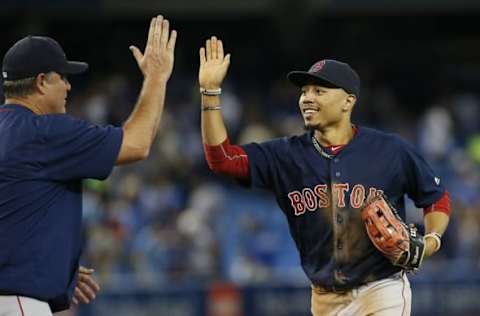
AMERICAN LEAGUE MVP FINALISTS
- Mike Trout, 10.0 WAR (1st in WAR)
- Mookie Betts, 8.7 WAR (2nd in WAR)
- Jose Altuve, 7.2 WAR (4th in WAR
Notable combined WAR candidate not included among the finalists: Josh Donaldson (7.5 WAR, 3rd).
I believe Mike Trout is on the top tier and Mookie Betts is by himself on the next tier, then Josh Donaldson and Jose Altuve occupy a third tier together. Beyond that, there is a group of players who had similarly valuable seasons, including Robinson Cano, Manny Machado, and Adrian Beltre.
Last year’s AL MVP, Josh Donaldson, finished third this year in combined WAR, but did not finish among the top three based on the vote of the BBWAA. He was only 0.3 WAR ahead of Jose Altuve, so it’s not an egregious snub. I expect Donaldson will finish fourth when the final results are announced on November 17. Statistically, he had the best on-base percentage of his career but a slightly lower slugging percentage than in 2015. His most notable drop-off in statistics was a 24-RBI decrease from 123 RBI in 2015 to 99 in 2016. He hit better with men on base and with runners in scoring position in 2015 than he did in 2016.
Jose Altuve slipped into the top three above Donaldson, despite finishing 4th in combined WAR. Donldson was favored by Fangraphs WAR (fWAR). Altuve finished with more Baseball-Reference WAR (bWAR). They both had great years, but neither player was as good as Trout or Betts.

NATIONAL LEAGUE MVP FINALISTS
- Kris Bryant, 8.1 WAR (1st in WAR)
- Corey Seager, 6.8 WAR (2nd in WAR)
- Daniel Murphy, 5.1 WAR (14th in WAR)
Notable combined WAR candidates not included among the finalists: Freddie Freeman (6.3 WAR, 3rd), Clayton Kershaw (6.1 WAR, 4th), Noah Syndergaard (5.9 WAR, 5th).
Daniel Murphy was so good at the plate, with a .347/.390/.595 batting line, that it may be surprising to see him finish in 14th place in combined WAR in the National League. His low finish can be attributed to missing 20 games and being a negative on defense. If had played another 10 games at the same level, he would have finished right around fifth in combined WAR and would have been in the conversation for third place. Even with a full season, his value doesn’t get to the level of Bryant or Seager, though.
Freddie Freeman had a much better year than many people realize. He was the third-best player in the NL based on the averaging of Fangraphs and Baseball-Reference WAR. His season may have flown under the radar because he played for Atlanta in a rebuilding year. Clayton Kershaw had an amazing season, but was limited to just 21 starts. Even pitching two-thirds of a season, he was a top five player in the National League. Noah Syndergaard finished in a virtual tie with Max Scherzer and Nolan Arenado in combined WAR.
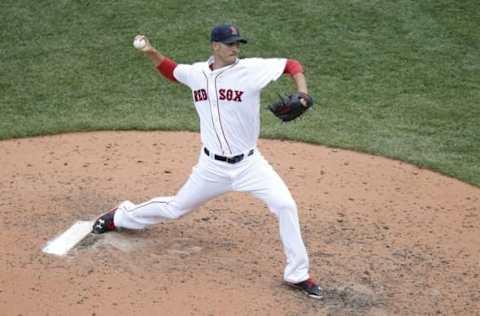
AMERICAN LEAGUE CY YOUNG FINALISTS
- Justin Verlander, 5.9 WAR (1st in WAR)
- Corey Kluber, 5.8 WAR (2nd in WAR)
- Rick Porcello, 5.1 WAR (3rd in WAR)
Notable combined WAR candidates not included among the finalists: Chris Sale (5.1 WAR, 4th), Masahiro Tanaka (5.0 WAR, 5th), Jose Quintana (5.0 WAR, 6th).
The voters got the top three right based on combined WAR, but we’ll have to see if Rick Porcello’s 22 wins end up earning him the award over the two pitchers who were more valuable based on advanced metrics. Porcello was essentially just as valuable as Chris Sale, Masahiro Tanaka, and Jose Quintana and all were a tier below Verlander and Kluber.
Porcello did get those 22 wins, though, and that still makes a difference with voters. Of course, he had an incredible 6.6 runs per game of run support. No pitcher had better run support than Porcello, which was a big factor in his 22 wins.
Corey Kluber also had good support from his Cleveland offense. He won 18 games with 5.16 runs per game of support. Justin Verlander “only” won 16 games, but he did so with just 3.97 runs per game from his offense. All three pitchers have their arguments for winning the AL Cy Young Award.
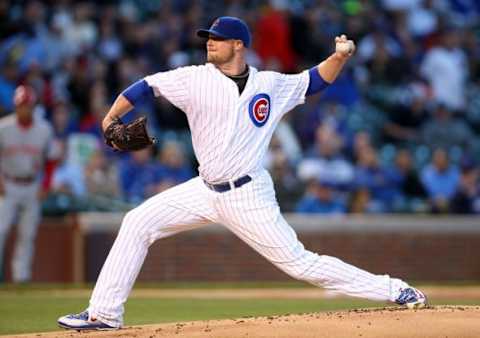
NATIONAL LEAGUE CY YOUNG FINALISTS
- Max Scherzer, 5.9 WAR (3rd in WAR)
- Jon Lester, 4.8 WAR (7th in WAR)
- Kyle Hendricks, 4.8 WAR (8th in WAR)
Notable combined WAR candidates not included among the finalists: Clayton Kershaw (6.1 WAR, 1st), Noah Syndergaard (5.9 WAR, 2nd), Johnny Cueto (5.6 WAR, 4th), Jose Fernandez (5.2 WAR, 5th), Madison Bumgarner (5.0 WAR, 6th).
The 103-win Cubs had two pitchers who finished in the top three in the NL Cy Young Award race. Jon Lester was 19-5 with a 2.44 ERA. He was second in the league in wins and ERA. Kyle Hendricks was 16-8 with a league-leading 2.13 ERA. Based on advanced metrics, Lester and Hendricks were seventh and eighth in value among National League pitchers. The other top three finisher is Max Scherzer, who led the league in wins and was the only NL pitcher to win 20. As good as Scherzer was, he was only third in the league in combined WAR.
Arguably, the top two pitchers in the National League were Clayton Kershaw and Noah Syndergaard. Kershaw was 12-4 with a 1.69 ERA. He struck out 172 batters and walked just 11 in 149 innings (15.6 K/BB). The only reason he isn’t among the top three finishers in the NL Cy Young Award race is because he only pitched 149 innings.
So lets compare Clayton Kershaw to Kyle Hendricks. Kershaw pitched 149 innings with a 1.69 ERA to Hendricks’ 190 innings with a 2.13 ERA. If Kershaw had pitched another 41 innings with a 3.73 ERA, he would have equaled Hendricks 2.13 ERA in 190 innings. Kershaw could have had an ERA more than twice as high as he actually had in 41 more innings to equal Hendricks’ ERA. Doing this same procedure to compare Kershaw to Lester results in Kershaw needing to pitch 53 2/3 more innings with a 4.53 ERA to equal Lester’s 2.44 ERA in 202 2/3 innings. There’s a good argument for Kershaw to have been among the top three finishers.
Noah Syndergaard finished third in ERA but tied for 13th in wins. The voters still like wins, so he didn’t really have a chance to finish in the top three, despite being more deserving than Lester or Hendricks based on advanced metrics. The combined WAR top three would be Kershaw, Syndergaard, and Scherzer on a tier above the rest of the pitchers in the NL.
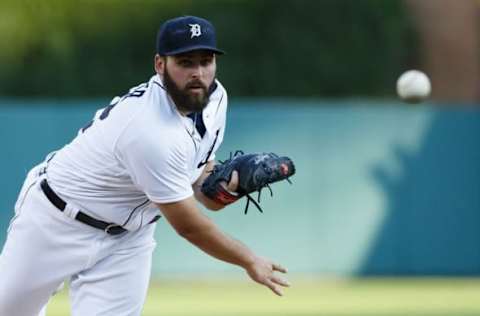
AMERICAN LEAGUE ROOKIE OF THE YEAR FINALISTS
- Michael Fulmer, 4.0 WAR (1st in WAR)
- Gary Sanchez, 3.1 WAR (2nd in WAR)
- Tyler Naquin, 1.7 WAR (9th in WAR)
Notable combined WAR candidates not included among the finalists: Christopher Devenski (2.8 WAR, 3rd), Tim Anderson (2.6 WAR, 4th), Sean Manea (2.3 WAR, 5th).
Michael Fulmer looked like a runaway winner for the AL Rookie of the Year Award until The Gary Sanchez Experience arrived in August and destroyed baseballs for two months. Fulmer finished with 11 wins and a 3.06 ERA in 159 innings. He came up three innings short of finishing third in the AL in ERA. Sanchez hit .299/.376/.657 with 20 homer runs in 53 games over the final two months of the season. Both are well deserving of a top three finish in the AL Rookie of the Year race. It will be interesting to see if Sanchez’ 53 MLB games of excellence is deemed more worthy of the award than Fulmer’s much longer stretch of above average pitching.
Tyler Naquin doesn’t fare as well when looking at the combination of FanGraphs and Baseball-Reference WAR. There are six players between Sanchez (2nd in combined WAR) and Naquin (9th), including the three mentioned above.
Chris Devenski was used mostly in relief by the Houston Astros. He had a 2.16 ERA in 108 1/3 innings. Tim Anderson had 431 plate appearances with a .283/.306/.432 batting line. Sean Manaea had a 3.86 ERA in 144 2/3 innings for the Oakland Athletics. He was second to Fulmer among AL rookie pitchers in starts and innings pitched.
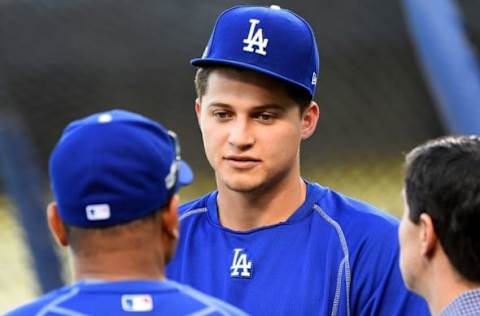
NATIONAL LEAGUE ROOKIE OF THE YEAR FINALISTS
- Corey Seager, 6.8 WAR (1st in WAR)
- Trea Turner, 4.1 WAR (2nd in WAR)
- Kenta Maeda, 2.9 WAR (8th in WAR)
Notable combined WAR candidates not included among the finalists: Junior Guerra (3.3 WAR, 3rd), Aledmys Diaz (3.1 WAR, 4th), Jon Gray (3.0 WAR, 5th), Tyler Anderson (3.0 WAR, 6th), Trevor Story (3.0 WAR, 7th).
More from Call to the Pen
- Philadelphia Phillies, ready for a stretch run, bomb St. Louis Cardinals
- Philadelphia Phillies: The 4 players on the franchise’s Mount Rushmore
- Boston Red Sox fans should be upset over Mookie Betts’ comment
- Analyzing the Boston Red Sox trade for Dave Henderson and Spike Owen
- 2023 MLB postseason likely to have a strange look without Yankees, Red Sox, Cardinals
Corey Seager is a slam-dunk here. He has a chance to achieve the Fred Lynn Combo by winning the Rookie of the Year and MVP Awards in the same season, which Lynn did in 1975. If he pulls it off, Seager would be only the third player in MLB history to achieve the feat (along with Lynn and Ichiro Suzuki). Seager finished on a tier above every other NL rookie.
Of course, there was another rookie who was in the conversation through the first four months of the season. Shortstop Trevor Story came out of the gate like a rocket for the Colorado Rockies, but his season ended on July 30. He ended up hitting .272/.341/.567, with 27 home runs and 72 RBI.
Through the same date Story’s season ended, July 30, Corey Seager was hitting .307/.362/.524, with 17 home runs and 47 RBI. They were both strong contenders for the NL Rookie of the Year Award at the time. Then Story got hurt and Seager kept hitting and that was it.
Trea Turner is also an easy choice for the top three. Even though he only played in 73 games, his .342/.370/.567 batting line and power-speed combo (13 homers, 33 steals) made him the most dynamic rookie in the league. If he had played the same number of games as Seager, he might have given him a run for his money.
Kenta Maeda is a slightly questionable top three finisher. Not only is he a 32-year-old veteran with eight years of experience in the Japan Central League, he also finished eighth in combined WAR among NL rookies. There were five players who were more valuable than Maeda who did not finish in the top three. Of course, none of those players were on a team that made the playoffs.
Next: Five trades that need to happen
Also, the difference is not large. There’s a gap from the 4.1 combined WAR of Trea Turner to the 3.3 combined WAR of Junior Guerra. The gap between Guerra and Maeda is just 0.4 WAR and there were four players with 3.0 or 3.1 WAR in between them.